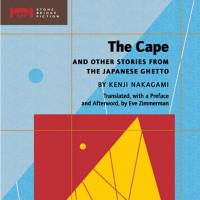When reading Kenji Nakagami, it is best to forget the stylistic niceties and aesthetic fussiness of writers such as Yasunari Kawabata. Instead, this collection of structurally complex stories by Nakagami contains accounts that, eschewing inference for the explicit, are nonetheless highly sophisticated, meticulously composed works of prose fiction.
The Cape And Other Stories From The Japanese Ghetto, by Kenji Nakagami.
Stone Bridge Press, Fiction.
Nakagami was a member of the socially disdained burakumin caste, ancestors of butchers, leather workers, grave diggers and executioners, a group by no means fully accepted even in today's Japan, where a subtle ostracism and exclusion prevails.
Impregnated with images of spilled blood, splintered bone and stained mattresses, these narratives are not for the faint-hearted. "House on Fire," for example, concerns the dysfunctional violence that runs like poison through a single family. "The Cape" meanwhile, takes love and family loyalties threatened by private torment and the specter of insanity as its main themes. The settings for these highly expressive narratives strongly resemble the writer's hometown of Shingu in the Kii Peninsula, where outcast families were expected to live within a physically demarcated nest of back alleys.
Beside their impact on a readership dulled by an over-refinement of "taste" in literature, Nakagami's uncompromising stories went some way to inspiring a sense of pride and belonging to a people obliged to carry knives in their pockets and resentment in their hearts.
Each week "Essentials" introduces a work of fiction that should be on the bookshelf of any Japanophile.



